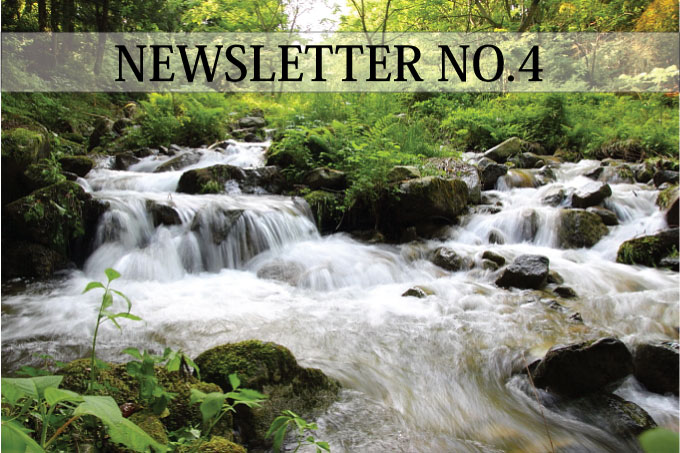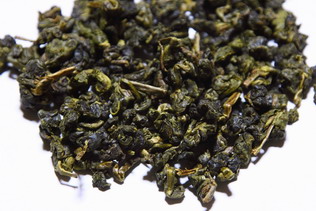
Greetings!
I am Akira Hojo from the HOJO TEA SHOP. You are receiving this email because you have registered to be on my list when you visited my shop at The Gardens Mall, in Mid Valley City, Kuala Lumpur. I am sorry for not getting in touch through newsletter for long time. I will publish more newsletters from now onwards.
I wish to share my experience regarding some brewing techniques. With a few simple tips, you could drastically improve the taste of your tea. In this newsletter, I will focus on the topic of WATER.
Water quality is very important for brewing tea. I always think that tea leaves is just like spices or herbs. When preparing food like fish or steak, we use spices or herbs to enhance the taste of the food. Imagine if you use poor quality meat for cooking, do you think good spices will improve the taste of the meat? Of course the answer is “NO”. It is important to select good meat more than thinking what spices we can use. Water for tea is just like the meat we select for steaks. Even if we have good tea leaves, the tea will not taste nice if the water we use is of poor quality. The better the water quality, the better the taste the tea would be.
It is very important to remove chlorine from the water. Chlorine is added into the water in order to kill the bacteria. Once chlorine reacts with water, it generates hypochlorous acid. This is a very reactive substance that could damage not only bacteria, but also our body. In addition, when chlorine is mixed with tea, it causes a chemical reaction with the substance in tea. In a way, tea detoxifies chlorine. As a result, this reaction will cause the tea to lose its flavor and taste.
We think water means H2O. In fact, water is the mixture between minerals and H2O. If the mineral content is higher, it is called hard water. Based on my experience, hard water gives a bitter taste to the tea. Moderate hardness is fine but generally soft water will be a better choice for making a good cup of tea.
This tea has won the high recognition in Japan's National Tea Competition for its distinctive quality. It is produced in the Nara prefecture.
Nara has as long history as Sencha, once known to be a very exclusive tea in Japan, yet nowadays its tea becomes very rare.
I selected this tea because I have a lot of nostalgic memories with Nara. I lived in Nara for 4 years when I was a student. Nara is located next to Kyoto prefecture. Once the capital of medieval Japan, Nara is an ancient city surrounded by mountains and highlands. Tsukigase is the town located deep inside the mountains. The cold weather produces tea with sweet and thick taste. The tea leaves are well rolled into very sharp and refine needle shapes.
It gives a very refreshing feeling like drinking fresh vegetable juice, the taste is so fresh as if the spring tea leaves are brewed and drank right after harvest. This tea was awarded in 4kg section. We only have less than 2kg left in stock at the moment.

I had a very sour experience in the past dealing with water issue in the shop. First I was using a branded mineral water for brewing tea. I was very happy with its taste. One day, this particular brand that we’ve been using ran out of stock and I had no choice but to purchase another brand. When I brewed the tea with this other brand, the taste of tea was horrible. I went back to the previous brand when the new stock came in. However I could not get the nice taste as before. Some time later, I managed to get back the previous taste after I had boiled more than 10 liters of the same water in the kettle we’ve been using.
Actually water generates scaling which is known as the complex of minerals. The minerals from water will accumulate on the wall of kettle and teapot. As long as we use the same brand of water, the composition of minerals in the scaling is always the same. What happens when we change the water quality? The particular minerals that exist in fewer amounts in the new water starts coming into the new water from the scaling. This eventually changes the mineral composition of new water. We call it buffer action in science. Due to the buffer action, the mineral composition is no longer the same as the original. When water is changed back to the original, the layer of scaling tries to absorb the particular mineral that was lost earlier. So the taste of previous water will be affected.
For tea drinkers, it is very important to keep using the same water. If your friend introduces special water, please make sure that you do not brew the tea using your own precious kettle or teapot.
Many friends of mine hate to see the white layer of minerals accumulated inside the wall of kettle. It is what I call scaling. It consists of Ca2CO3 and other trace minerals. It is built when water contains excessive minerals. Thanks to the scaling, it maintains the mineral composition. Even if we are using the same brand of water, mineral composition is slightly varies from time to time. If particular mineral is less for now, scaling will release extra mineral to balance up. On the other hand, if particular mineral in water is more for now, scaling will absorb it. In conclusion, scaling functions to balance the ideal level of minerals in the water. If you remove the scaling, the taste of water varies a lot each time you add in water. The quality of water directly affects to the taste and there will be no buffer action.
I realized that the taste of water in the morning and night is obviously different. Water has less movement at night. In a day time, due to large and frequent consumption, water moves very fast. With fast movement, it seems that water is not well dissolved with mineral, thus the water has fewer flavors in fact. I keep my water over night and check the taste the next day. It obviously increases the flavor of tea. I find that over night water definitely taste better!
HOJO brings in many New Teas in this Spring season!
Sometime ago I tasted conventional Ginseng Oolong. Ordinary Ginseng Oolong has a very sweet taste but lacks of aroma as well as flavor of genuine Oolong tea. This is due to the artificial Ginseng flavor coated onto low-grade tea leaves. When I first tasted this new tea from Taiwan, I was taken aback as it completely changed my previous perception on Ginseng Oolong. This tea is made from high mountain tea leaves cultivated in Shan Lin Xi area (Taiwan). The tealeaves are mixed with genuine natural Canadian Ginseng, later carefully baked with charcoal fire. The high mountain tea leaves gives a strong aroma, with a pleasant lingering aftertaste brought forth by moderate sweetness of naturally grown Ginseng. Both Ginseng and Oolong contains substances that help to improve blood circulation.
Standard Dong Ding Oolong is made from the cultivar called Qing Xin Oolong (青心烏龍) . It gives a flowery and refreshing note to the tea. On the other hand, Dong Ding Jin Xuan Oolong is made from a different type of cultivar called Jin Xuan (金萱). Thanks to the baking process with charcoal fire, it gives a very strong aroma complimented with sweet creamy note that reminds us of baked chestnuts. Dong Ding Jin Xuan is an excellent tea to drink during meals. It is also an exceptional compliment to Chinese cuisine.
This Jin Xuan Oolong has a different character compared to standard Ali Shan Cha, although both are planted in the Ali Shan area. Standard Ali Shan Cha is made of Qing Xin Oolong(青心烏龍), which is the same as Dong Ding Oolong. 青心烏龍 gives a very refreshing and fruity aroma. On the other hand, Jin Xuan gives a milky aroma with an extra smooth silky taste. It is suitable for those who would enjoy more delicate taste of tea.
